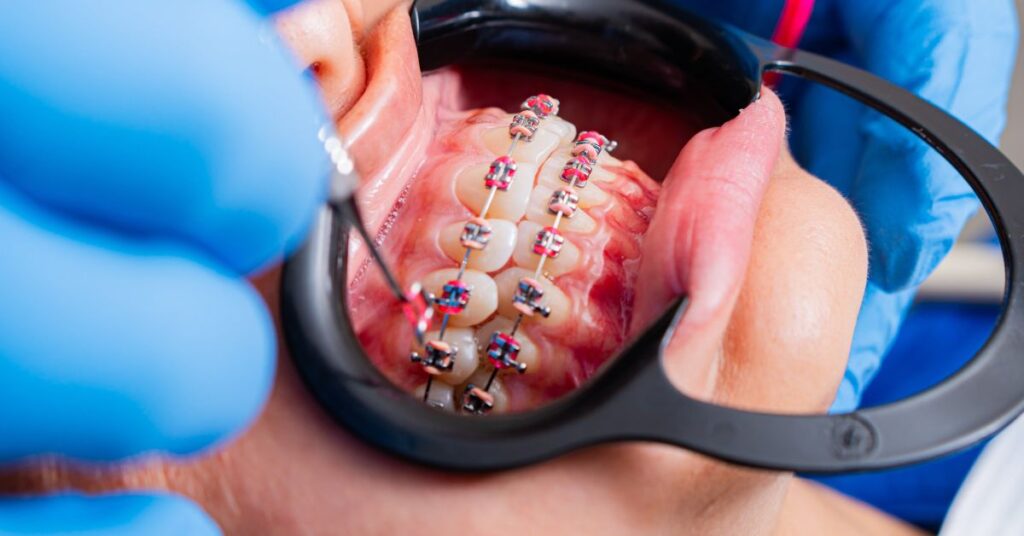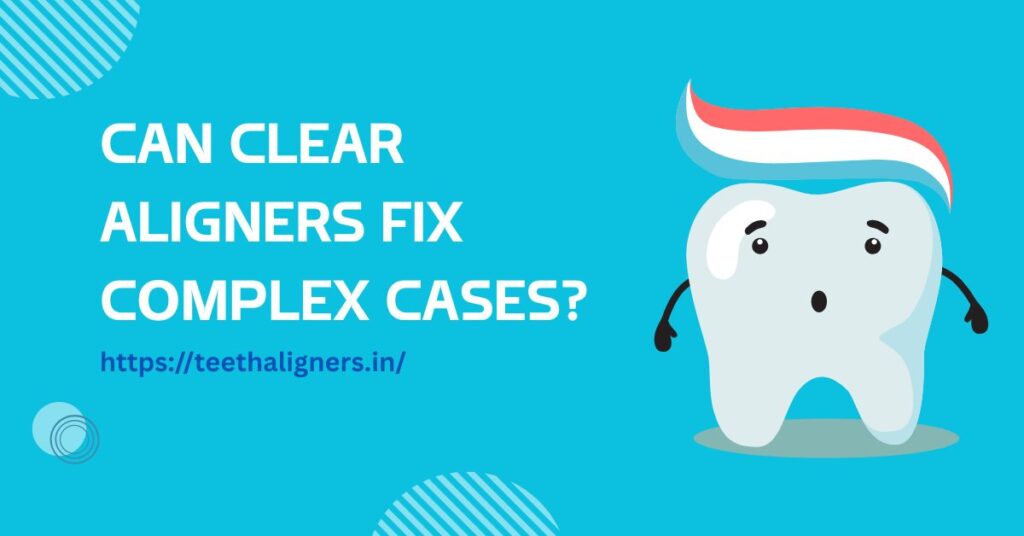Orthodontic care has advanced a great deal from the time when metal braces were the only solution for crooked or misaligned teeth. Today, many people wonder whether Clear Aligners can do more than fix small gaps or mild crowding.
These nearly invisible trays have gained attention for their comfort and appearance, but the question remains: can they really handle complex dental cases?
To answer this, we need to look at how they work, what makes a case complex, and how recent advances have expanded their ability to treat challenging situations.
Table of Contents
ToggleHow Do Clear Aligners Work?
Aligners are made from durable, transparent plastic that is shaped to fit tightly over the teeth. They apply gentle but steady pressure to move the teeth into better positions.
Each set of trays is worn for about two weeks before switching to the next set, and over time, this gradual process shifts the teeth step by step.
Unlike traditional braces that use metal wires and brackets, Invisible teeth aligners rely on computer-guided planning. Dentists or orthodontists use advanced 3D scanning technology to design a treatment plan from start to finish.
This detailed process gives clear guidance on how each tooth should move, making it possible for aligners to correct more than just minor dental issues.
What Counts as a Complex Case?
Complex cases go beyond simple crowding or small gaps in the teeth. They usually involve problems such as severe overlapping, wide spacing, or issues with the bite that affect how the upper and lower teeth meet.
Conditions like overbite, underbite, or crossbite fall into this category. Some patients may also have teeth that are rotated or require vertical movement, and in certain cases, jaw alignment plays a role.
These challenges can be more difficult to manage with removable trays compared to fixed braces, which is why some people think aligners may not be suitable for such cases. However, advances in aligner technology have changed that perception.
Advances That Make Aligners More Powerful
In their early years, aligners were mainly seen as an option for mild corrections. Today, however, several innovations have made them far more effective in treating difficult cases.
One of the biggest improvements is the use of attachments, which are small, tooth-colored shapes placed on the teeth.
These give aligners extra grip and allow for better control, especially when teeth need to rotate or move vertically.
Another helpful feature is the use of elastics, which work alongside aligners to correct bite issues. Just as braces sometimes use rubber bands, aligners can now include them to guide the upper and lower jaws into proper alignment.
Additionally, manufacturers design aligners with precision cuts and power ridges that create stronger, more focused pressure on certain teeth. Together, these advances allow aligners to manage more complex movements than ever before.
Examples of Complex Cases Aligners Can Handle
Severe Crowding
For patients whose teeth overlap heavily, aligners can slowly create the needed space and straighten them. In some cases, dentists may recommend removing a tooth to provide more room, just as they would with braces.
Bite Problems
Deep bites, open bites, and crossbites are conditions that can impact chewing and jaw health. While braces may sometimes be faster in addressing these issues, aligners combined with elastics have proven effective in treating many patients with these bite problems.
Rotated Teeth
Rotating teeth, especially canines, is often difficult. With the support of attachments, aligners can achieve the grip needed to gradually turn stubborn teeth into the correct position.
Gap Closure
Closing wide spaces between teeth was once considered challenging for aligners. Today, however, gradual but steady pressure allows aligners to close even larger gaps, though it may take more time than smaller spacing cases.

When Braces May Still Be Better
Although aligners can handle many difficult cases, there are times when traditional braces remain the stronger option. Severe jaw misalignments may require surgery in addition to braces, making aligners less practical in such cases. Similarly, when teeth need to move long distances, fixed braces may provide more precise control.
Another important factor is patient responsibility. Aligners must be worn for 20 to 22 hours per day, and forgetting to wear them regularly can slow progress or cause setbacks.
Dentists in Delhi often explain that while aligners are an excellent choice for many patients, their success depends greatly on how committed the patient is to following instructions.
Patient Commitment and Lifestyle Factors
One of the biggest advantages of aligners is that they can be removed when eating or cleaning the teeth. This makes daily life easier compared to braces, but it also creates a risk.
If patients remove their trays too often or forget to put them back in, the treatment will not move forward as planned.
Consistency is key, and wearing the aligners for the recommended time each day is the only way to see reliable results.
Technology and Case Planning
The digital planning process is one of the strongest aspects of aligner therapy. Before treatment begins, dentists use 3D scans and computer software to create a model that shows how the teeth will move over time. Patients can even see a preview of their expected results before they start.
For complex cases, this level of planning is especially valuable. It gives both the dentist and the patient a clear idea of how the treatment will progress and makes it easier to adjust if needed.
Real-World Results
Research and clinical cases have shown that aligners can deliver excellent results even for patients with severe crowding, rotated teeth, or bite problems.
Many adults and teens who once thought braces were their only choice have achieved healthy, straight smiles with aligners.
For instance, orthodontists in Delhi often share stories of patients who had deep bites or overlapping teeth and completed treatment with noticeable improvements.
These real-world outcomes show that aligners are more than a cosmetic option, they are a serious orthodontic solution.
Key Advantages of Aligners for Complex Cases
One of the most important benefits of aligners is their appearance. Because they are nearly invisible, patients can straighten their teeth without feeling self-conscious.
Comfort is another advantage, since the smooth plastic trays do not irritate the cheeks and gums the way wires and brackets sometimes do.
Hygiene is also easier, as the trays can be removed for brushing and flossing. This reduces the risk of cavities or gum problems during treatment.
Finally, flexibility plays a role. Patients can enjoy their favorite foods without restrictions, since the trays are taken out during meals.
Challenges of Using Aligners in Complex Cases
While aligners offer many benefits, there are still some challenges. Treatment time for complicated corrections may be longer than with braces.
Patients must also take on more responsibility, as forgetting to wear trays can slow or even reverse progress.In some cases, aligners may need help from additional tools such as elastics or attachments.
Occasionally, a short period of braces may even be combined with aligner use to complete the treatment successfully.
The Role of the Dentist
The expertise of the dentist or orthodontist is one of the most important factors in whether aligners can fix complex cases.
A skilled professional knows how to design the treatment plan, place attachments correctly, and make adjustments if the teeth are not moving as expected.
Choosing the right provider is crucial for patients who want to achieve the best results with aligners.
Is Everyone a Candidate?
Not every patient is suitable for aligners, especially if jaw surgery is required to correct the problem. Still, many people who were once told that braces were their only choice may now be able to use aligners thanks to the advances in technology. The only way to know for sure is to schedule a consultation and have a detailed evaluation.
Conclusion
Clear Aligners have developed far beyond their early days of treating only simple cases. With the help of digital planning, attachments, and elastics, they can now correct many complex issues, including crowding, rotations, and bite problems.
While braces remain necessary for some severe cases, aligners provide a comfortable, discreet, and modern alternative for many patients.
The decision between braces and aligners depends on the complexity of the case, the guidance of a skilled dentist, and the patient’s dedication to wearing the trays daily.
At Teeth Aligners in India, patients can find expert care and advanced technology to help them achieve healthier, straighter smiles.

